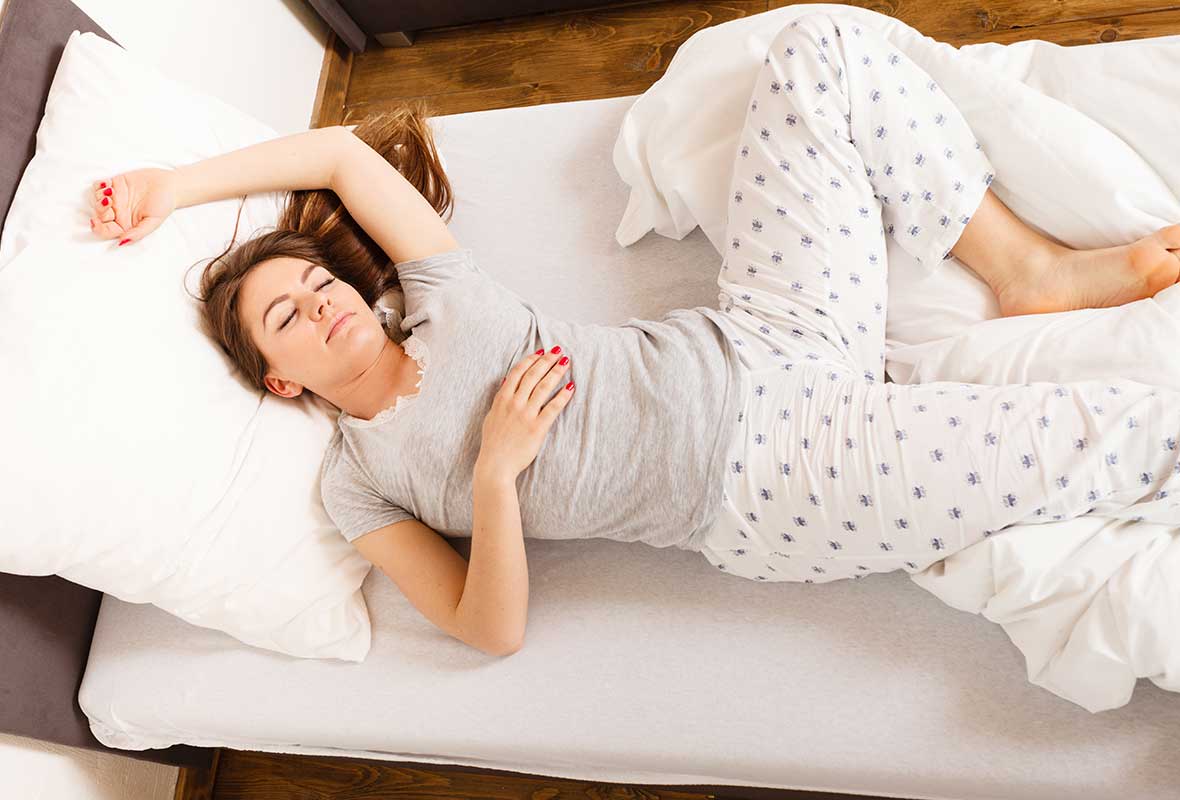
How different sleeping positions can affect your back
Did you know that the positions you sleep in impact how well you’re rested, and how well your back is supported at night?
While sleeping on the right mattress is extremely important for comfort, postural alignment and whole body support, your sleep position plays a large part in the quality of your sleep and the health of your back. Most people are creatures of habit and changing your sleep position if you think it’s causing or aggravating your back pain isn’t always easily done. To help, we provide a few tips you can follow to get better back support, no-matter what your preferred sleeping position is.
Sleeping on your front
When you sleep on your stomach your back flexes unnaturally and strains the ligaments around your spine, making it difficult to maintain a neutral sleeping position. If this is the only way you can sleep comfortably, try placing a pillow underneath your chest to help reduce the strain on your back.
Sleeping on your side
When sleeping on your side, your body may become twisted so that your legs can rest side-by-side on the mattress, instead of on top of each other. This strains your spine. Instead, lie on your side and put a slight bend in your knees, stacking your hips in a straight line. Place a firm pillow between your knees so your legs are propped about hip-width apart. Sleeping with extra padding takes practice and it may feel unnatural at first – however your body will later thank you as the pain you experience in the night will drastically reduce.
Sleeping on your back
This is the easiest sleeping position to ensure you keep your head, neck and back aligned in a neutral position throughout the night. To maintain a normal curve in your lower back, place a pillow underneath your knees. You can also try placing a small rolled towel or a pillow under the small of your back for additional support.
All positions
Regardless of your preferred position, when you’re lying your bed your body should lie flat with continuous support and have full contact with the mattress surface. If there are gaps between your body and the surface of your mattress, you’re not getting the full support that you need.




